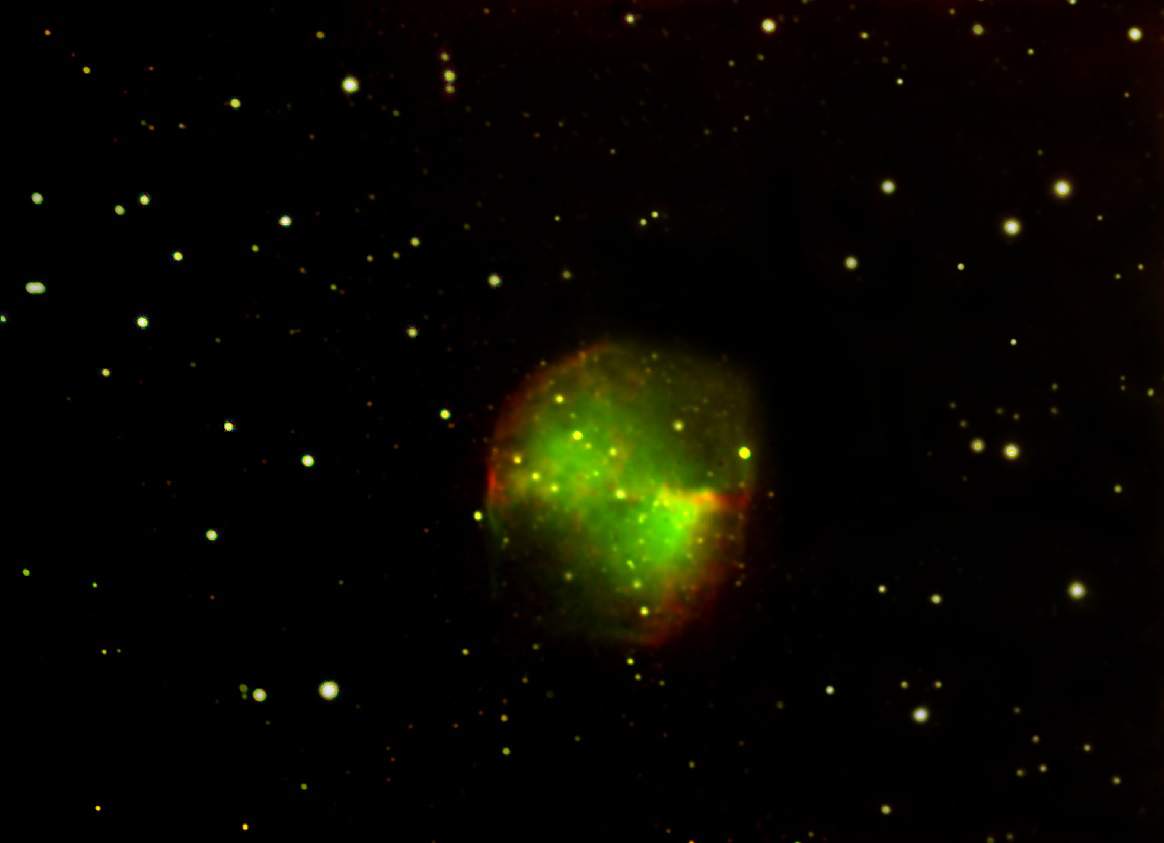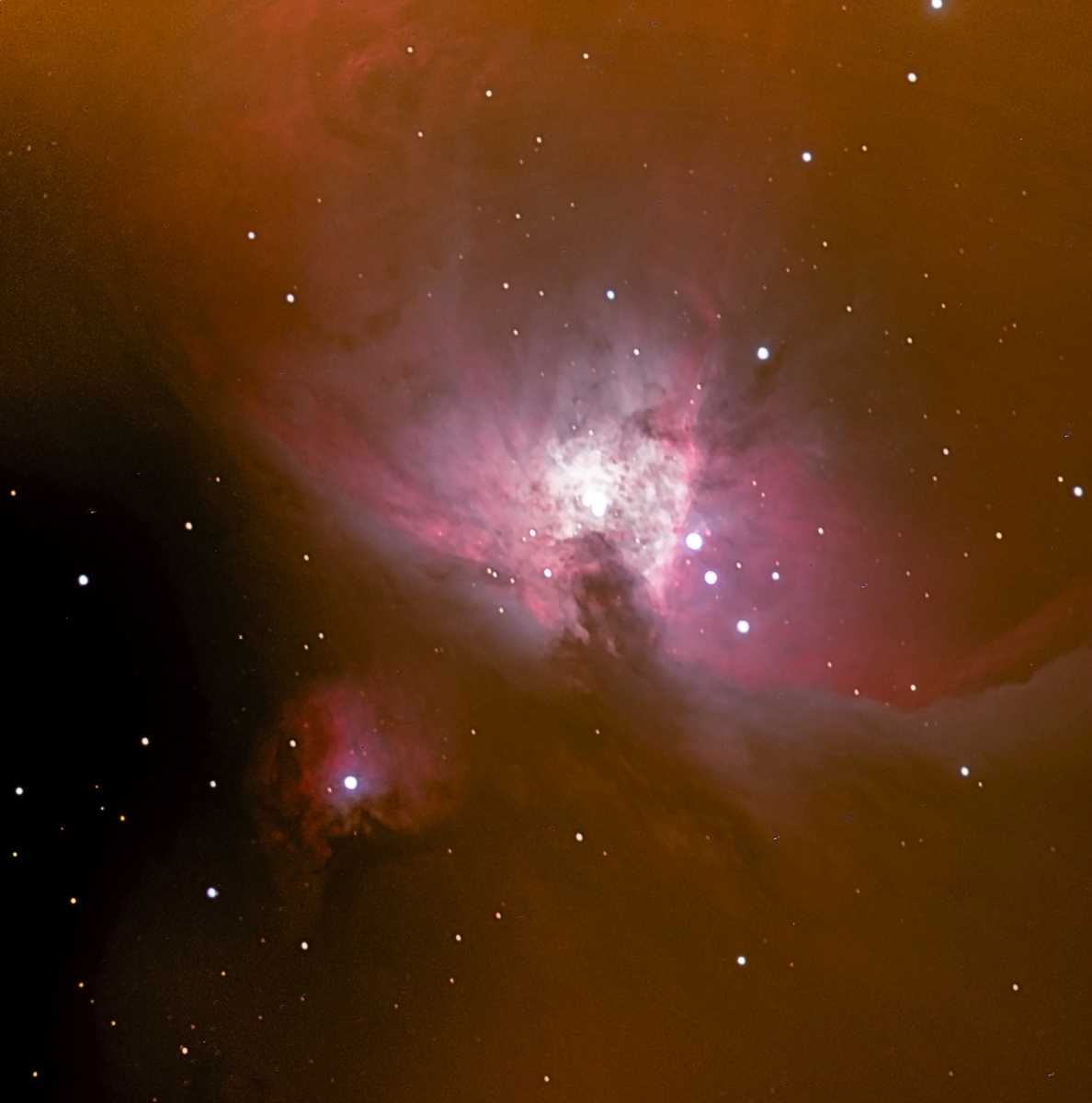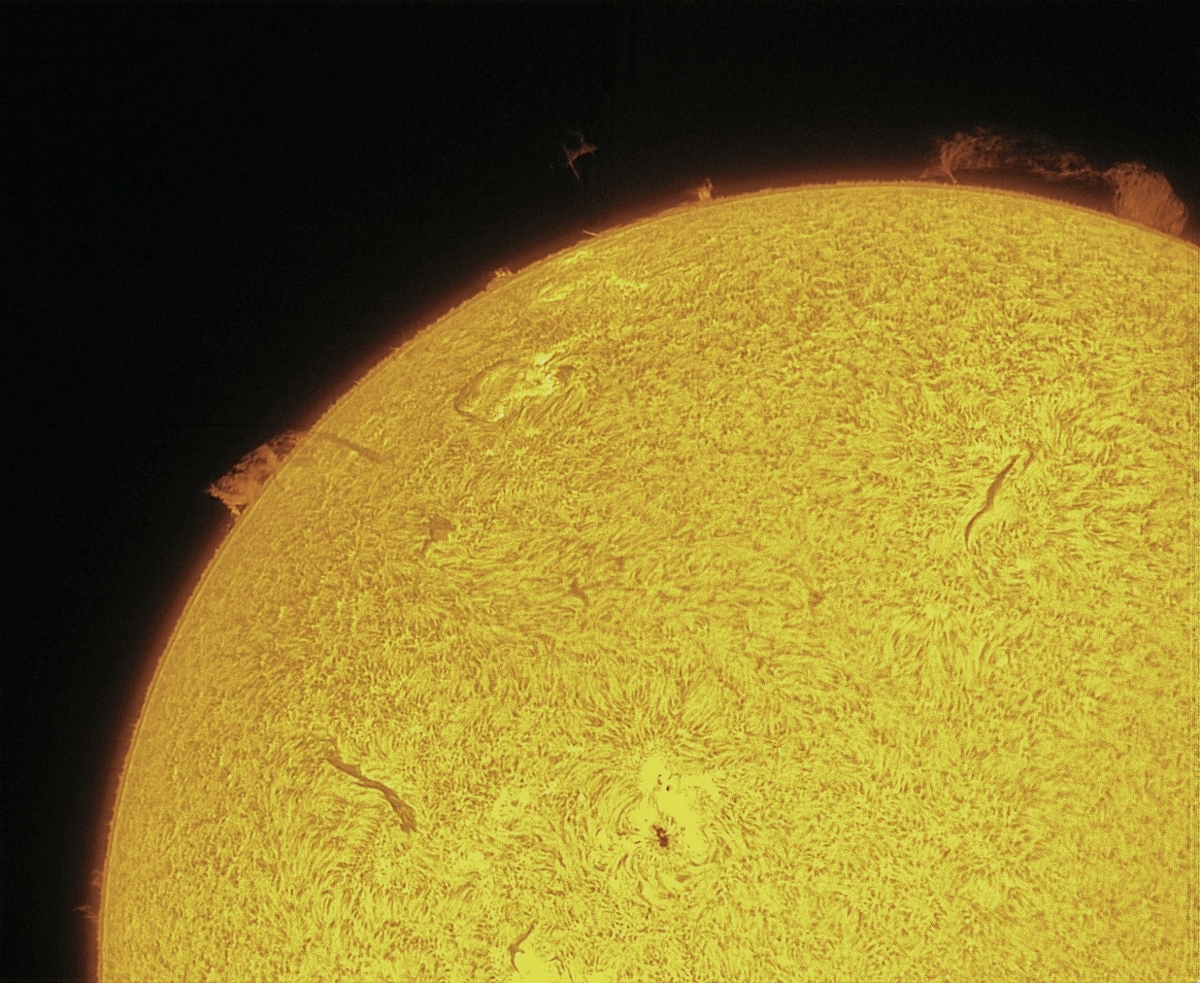Astronomical Observatory
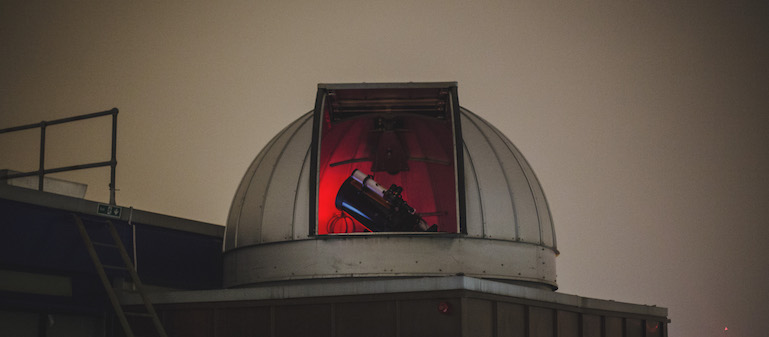 The observatory is located on the roof of the Department of Physics & Astronomy. Being up on the 7th floor, this provides a panoramic view of the night sky and is an ideal location for undertaking astronomical observations within central London. In spite of this being among the most light-polluted sites in the world, beautiful and spectacular images can be captured through the judicial choice of astronomical targets combined with professional class CCD cameras and filters (see below).
The observatory is located on the roof of the Department of Physics & Astronomy. Being up on the 7th floor, this provides a panoramic view of the night sky and is an ideal location for undertaking astronomical observations within central London. In spite of this being among the most light-polluted sites in the world, beautiful and spectacular images can be captured through the judicial choice of astronomical targets combined with professional class CCD cameras and filters (see below).The primary purpose of the observatory is for teaching undergraduate students who are studying for a BSc or MSci in either Astrophysics or Physics with Astrophysics. Students will be introduced to the operation of the observatory and to basic techniques in astronomical observing and data analysis during their taught modules, and will have the opportunity to undertake research projects in observational astronomy during their degrees.
An opportunity exists for students on the Astrophysics or Physics with Astrophysics programmes to spend a month in the summer undertaking observations and data analysis at the Skinakas observatory on the island of Crete. Typically, two students are selected annually by the department through a competitive process, where the selection criteria include overall academic achievement and clear demonstration of a student having a strong aptitude and commitment to observational astronomy.
Student Projects
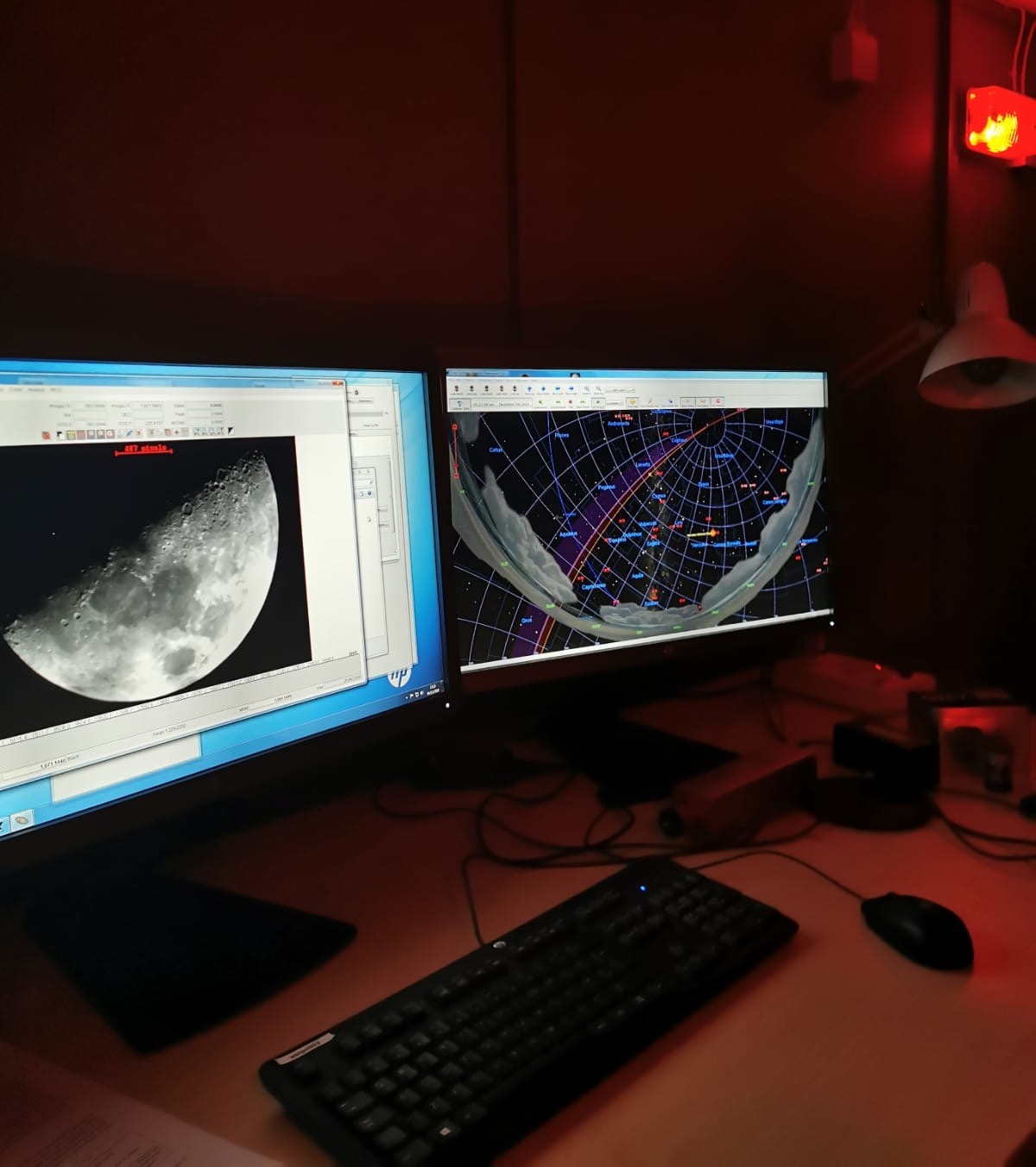 The observatory is used by students undertaking observational astronomy research projects in the final year of their degrees. A selection of projects that have been undertaken in recent years includes:
The observatory is used by students undertaking observational astronomy research projects in the final year of their degrees. A selection of projects that have been undertaken in recent years includes:- Observing star clusters and determining the ages and distances of the stars through isochrone fitting
- Observing variable stars and determining their properties. Targets include Cepheid variables, R R Lyra stars, eclipsing binary star systems
- Observing asteroids, determining their rotation periods and modelling their geometrical shapes
- Detecting exoplanets transiting in front of their host stars and determine their physical characteristics
Observing Facilities
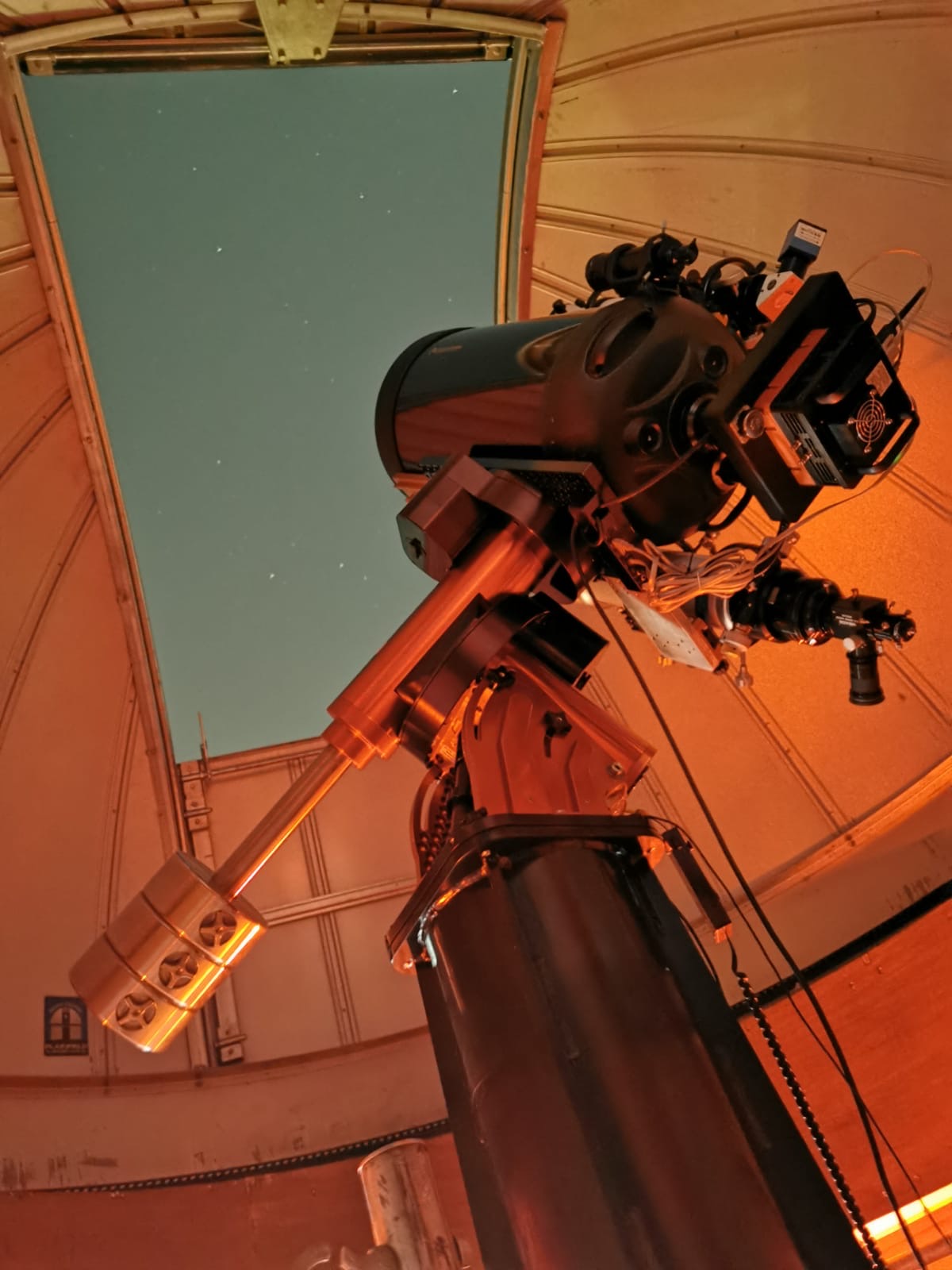 We have three telescopes available for use at the observatory. The images seen on this webpage have been obtained using these. Here is a summary of the telescopes and associated instruments:
We have three telescopes available for use at the observatory. The images seen on this webpage have been obtained using these. Here is a summary of the telescopes and associated instruments:- Celestron C14 Schmidt-Cassegrain reflecting telescope with SBIG STXL CCD Camera, integrated filter wheel and UVBRI filter set. This is the main work horse for student project-related astronomical observations.
- Star Wave 110 ED refracting telescope. This is typically used for visual observation of solar system objects such as planets, and can also be paired with a CCD camera for image capture.
- Lunt 80mm H-alpha double-stack Solar Telescope. Can be used for visual observing or image capture when combined with CCD camera.
- The telescopes are mounted on a computer-controlled Paramount MEII provided by Software Bisque for accurate pointing and tracking.
- All systems are controlled remotely using the Sky X software package provided by Software Bisque.
Images
The observatory is equipped with telescopes for both night-time and solar observing. Below is a selection of images that have been captured using the observatory (click for full resolution image).
The solar telescope was used to track the transit of Mercury across the Sun on 09/05/2016 - a link to a YouTube recording of this even can be seen here https://www.youtube.com/watch?v=KVs3svLDCQY
Recent Upgrade
In 2022, The Department of Physics & Astronomy recently invested in a significant upgrade of the observatory to allow it to be operated remotely from any computer with an internet connection. This has dramatically improved the access students have to the observatory and has increased the total amount of observing time that is available.

